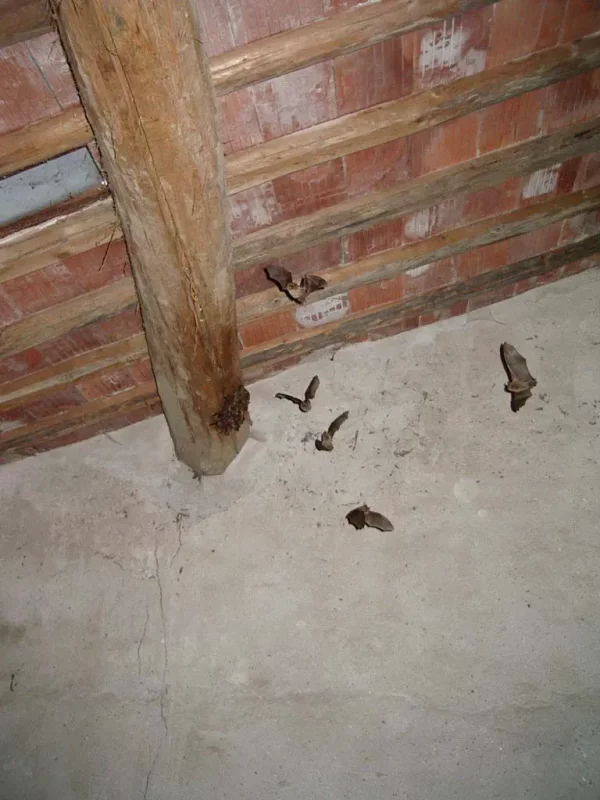Why is fighting against luminous pollution necessary?
The Gardon gorges Natura 2000 site is partly used as a hunting ground by the most important breeding colony of Geoffroy’s bats in Languedoc-Roussillon. Located in an ancient barn on Brôt square, Dions, the colony includes 600 females before giving birth, and nearly a thousand individuals with the juveniles.
Brôt square’s lighting system was modernised in 2018. The old streetlights with reflectors were replaced by less directional streetlights, with lightbulbs more powerful then ever before. Two new streetlights have equally been placed in the shelter’s near surroundings.
This work has significantly increased luminosity. The SMGG has noticed a disturbance in the shelter’s occupancy: the bats leave far later to hunt and do so little at a time. The juvenile mortality has also largely increased since the implementation of new lighting: 28 corpses in 2018 instead of a single one in 2017.
It is therefore vital to lower the brightness around the Dions House of bats and allow the animals to move as conveniently as possible.
